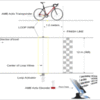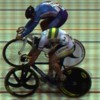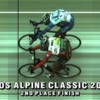Actually, James, the accuracy of transponder systems has always been the least of my worries. I am able to say that from the convenient place of always having had a photofinish system running alongside anyway (actually, that was always still our primary); I would be very glad if the transponder system would pick up all riders, and point me out which are a draw. If you are a transponder cynic, you can set the "draw" threshold very loosely, and have the software system alert you that you have to judge certain couples of riders with your photofinish, but you would already get a pretty nice "picture" of results to distribute (while pointing out the draws) and have only very little of the manual photofinish judging work left... IF IT WEREN'T FOR... again... the mentioned practical concerns.
But, to the credit of AMB i.t. I would say that the "technological accuracy" is really superb. But, as James lined out, it again comes down to practical problems!
This technological excellence I have only ever seen with AMB i.t. If you look at ChampionChip for road cycling: don't. And on the it-timing.com website (to which Fred linked, before) I read that Winning Time is designed around the same technology (Texas Instruments' TIRIS), so that the same negative advise applies. I was able to "attack" a full-blown ChampionChip set-up, literally with a screw-driver, but after reading all there was to find on the web about TIRIS, so if you want me to go into that as well, I'd be happy to share.
I'm Dutch; AMB i.t. is Dutch. Go figure. But there is another company in our country that was doing some work in the transponders area: Chronit Solutions at
http://www.chronit.com. It's a while now since I looked at their website and I'm disappointed to see it looking exactly the same as before. In this particular case I consider that a sign of them not being all too successful with things... but hey, I might be wrong.
We worked with them for a bit too, but they were making the same mistakes that AMB repeatedly made: they don't listen to our practical complaints until they have already something developed, at which point they feel too sorry for all the money and effort they put in, to change anything.
Sorry... I'm on a role... I better gonna sleep now! Good nite, folks!



